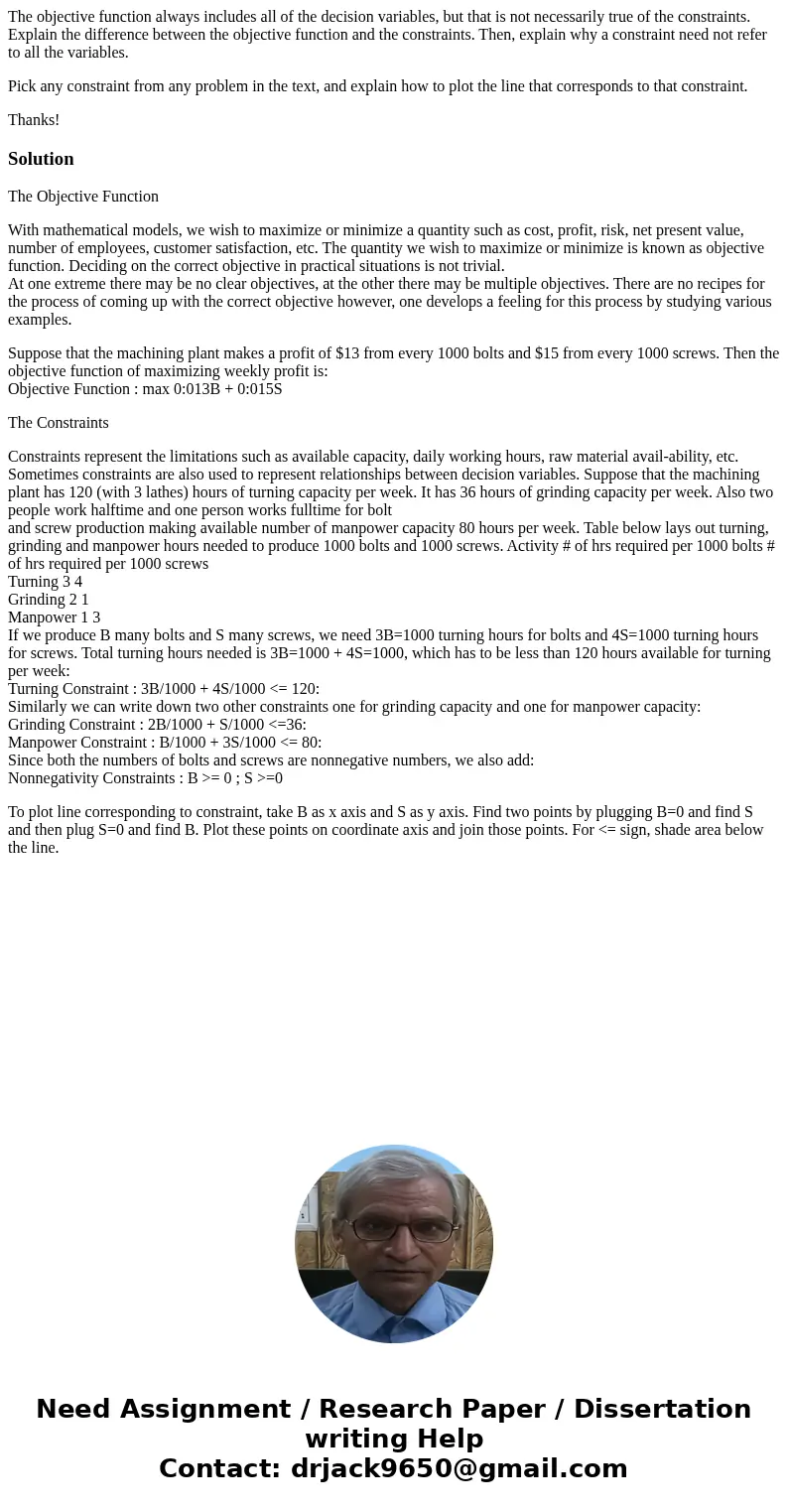The objective function always includes all of the decision v
The objective function always includes all of the decision variables, but that is not necessarily true of the constraints. Explain the difference between the objective function and the constraints. Then, explain why a constraint need not refer to all the variables.
Pick any constraint from any problem in the text, and explain how to plot the line that corresponds to that constraint.
Thanks!
Solution
The Objective Function
With mathematical models, we wish to maximize or minimize a quantity such as cost, profit, risk, net present value, number of employees, customer satisfaction, etc. The quantity we wish to maximize or minimize is known as objective function. Deciding on the correct objective in practical situations is not trivial.
At one extreme there may be no clear objectives, at the other there may be multiple objectives. There are no recipes for the process of coming up with the correct objective however, one develops a feeling for this process by studying various examples.
Suppose that the machining plant makes a profit of $13 from every 1000 bolts and $15 from every 1000 screws. Then the objective function of maximizing weekly profit is:
Objective Function : max 0:013B + 0:015S
The Constraints
Constraints represent the limitations such as available capacity, daily working hours, raw material avail-ability, etc. Sometimes constraints are also used to represent relationships between decision variables. Suppose that the machining plant has 120 (with 3 lathes) hours of turning capacity per week. It has 36 hours of grinding capacity per week. Also two people work halftime and one person works fulltime for bolt
and screw production making available number of manpower capacity 80 hours per week. Table below lays out turning, grinding and manpower hours needed to produce 1000 bolts and 1000 screws. Activity # of hrs required per 1000 bolts # of hrs required per 1000 screws
Turning 3 4
Grinding 2 1
Manpower 1 3
If we produce B many bolts and S many screws, we need 3B=1000 turning hours for bolts and 4S=1000 turning hours for screws. Total turning hours needed is 3B=1000 + 4S=1000, which has to be less than 120 hours available for turning per week:
Turning Constraint : 3B/1000 + 4S/1000 <= 120:
Similarly we can write down two other constraints one for grinding capacity and one for manpower capacity:
Grinding Constraint : 2B/1000 + S/1000 <=36:
Manpower Constraint : B/1000 + 3S/1000 <= 80:
Since both the numbers of bolts and screws are nonnegative numbers, we also add:
Nonnegativity Constraints : B >= 0 ; S >=0
To plot line corresponding to constraint, take B as x axis and S as y axis. Find two points by plugging B=0 and find S and then plug S=0 and find B. Plot these points on coordinate axis and join those points. For <= sign, shade area below the line.

 Homework Sourse
Homework Sourse